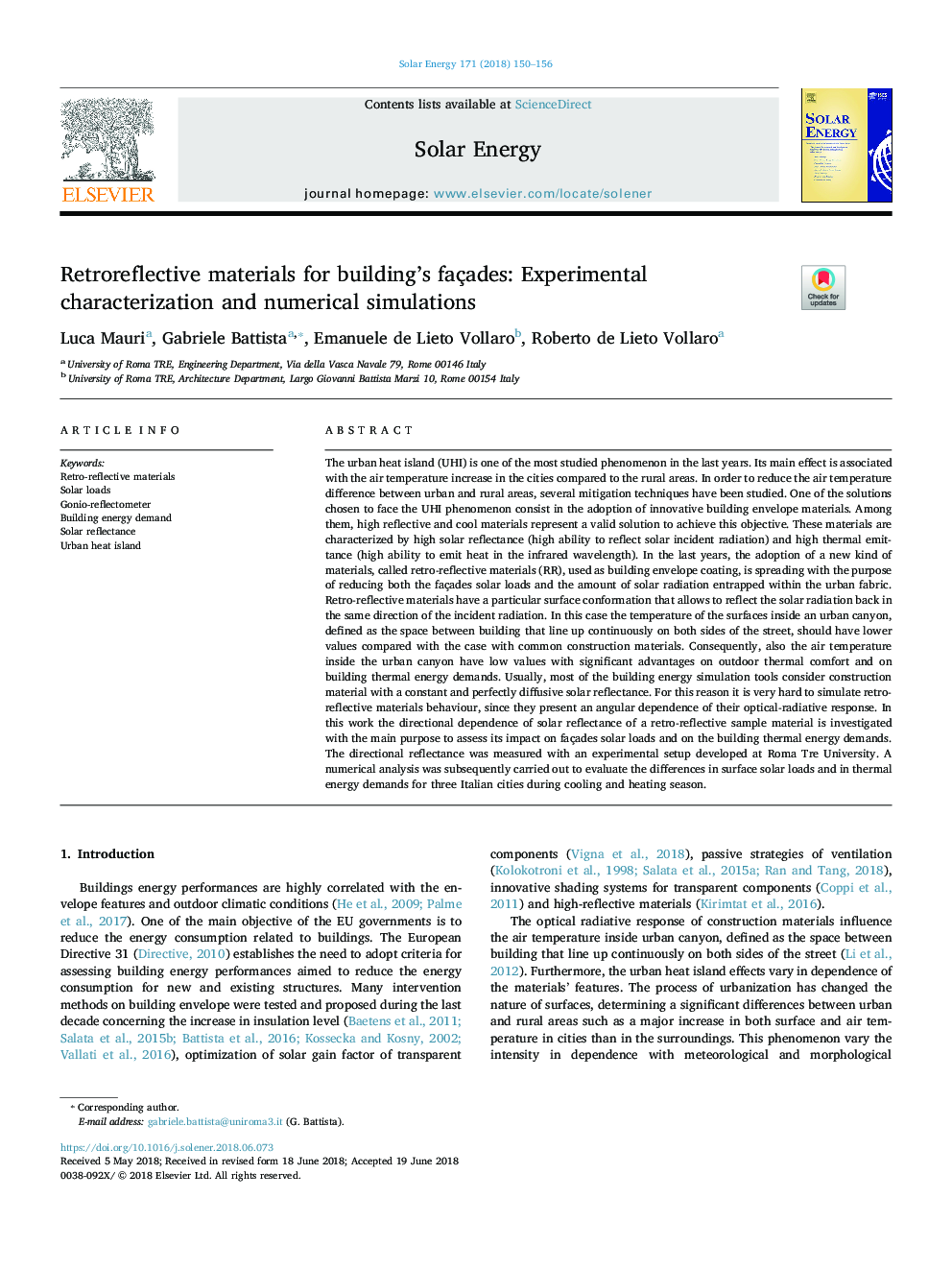| کد مقاله | کد نشریه | سال انتشار | مقاله انگلیسی | نسخه تمام متن |
|---|---|---|---|---|
| 7934975 | 1513047 | 2018 | 7 صفحه PDF | دانلود رایگان |
عنوان انگلیسی مقاله ISI
Retroreflective materials for building's façades: Experimental characterization and numerical simulations
ترجمه فارسی عنوان
مواد ضدعفونی کننده برای ساختمان های فاز: خصوصیات تجربی و شبیه سازی های عددی
دانلود مقاله + سفارش ترجمه
دانلود مقاله ISI انگلیسی
رایگان برای ایرانیان
کلمات کلیدی
موضوعات مرتبط
مهندسی و علوم پایه
مهندسی انرژی
انرژی های تجدید پذیر، توسعه پایدار و محیط زیست
چکیده انگلیسی
The urban heat island (UHI) is one of the most studied phenomenon in the last years. Its main effect is associated with the air temperature increase in the cities compared to the rural areas. In order to reduce the air temperature difference between urban and rural areas, several mitigation techniques have been studied. One of the solutions chosen to face the UHI phenomenon consist in the adoption of innovative building envelope materials. Among them, high reflective and cool materials represent a valid solution to achieve this objective. These materials are characterized by high solar reflectance (high ability to reflect solar incident radiation) and high thermal emittance (high ability to emit heat in the infrared wavelength). In the last years, the adoption of a new kind of materials, called retro-reflective materials (RR), used as building envelope coating, is spreading with the purpose of reducing both the façades solar loads and the amount of solar radiation entrapped within the urban fabric. Retro-reflective materials have a particular surface conformation that allows to reflect the solar radiation back in the same direction of the incident radiation. In this case the temperature of the surfaces inside an urban canyon, defined as the space between building that line up continuously on both sides of the street, should have lower values compared with the case with common construction materials. Consequently, also the air temperature inside the urban canyon have low values with significant advantages on outdoor thermal comfort and on building thermal energy demands. Usually, most of the building energy simulation tools consider construction material with a constant and perfectly diffusive solar reflectance. For this reason it is very hard to simulate retro-reflective materials behaviour, since they present an angular dependence of their optical-radiative response. In this work the directional dependence of solar reflectance of a retro-reflective sample material is investigated with the main purpose to assess its impact on façades solar loads and on the building thermal energy demands. The directional reflectance was measured with an experimental setup developed at Roma Tre University. A numerical analysis was subsequently carried out to evaluate the differences in surface solar loads and in thermal energy demands for three Italian cities during cooling and heating season.
ناشر
Database: Elsevier - ScienceDirect (ساینس دایرکت)
Journal: Solar Energy - Volume 171, 1 September 2018, Pages 150-156
Journal: Solar Energy - Volume 171, 1 September 2018, Pages 150-156
نویسندگان
Luca Mauri, Gabriele Battista, Emanuele de Lieto Vollaro, Roberto de Lieto Vollaro,
